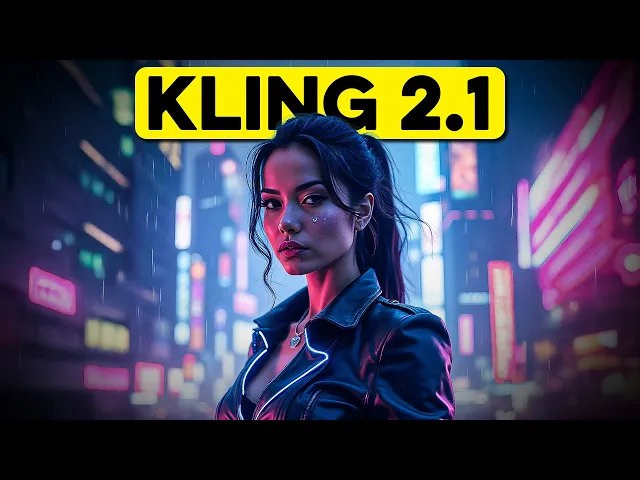Kling AI 2.1 Image to Video Tutorial – Insane AI Video Generator

Kling AI transforms workflow for video creators
In the race to automate creative production, AI video generation stands as one of the most exciting frontiers. The recent update to Kling AI's platform demonstrates just how rapidly this technology is evolving, bringing professional-quality video creation capabilities to everyone from marketing teams to independent content creators. What was once a resource-intensive process requiring specialized skills can now be accomplished with a few clicks and prompts.
Key Points
- Kling AI 2.1 transforms static images into high-quality, customized videos through an intuitive web interface
- The platform offers extensive customization options including motion paths, aspect ratios, and seamless scene transitions
- Kling's technology produces remarkably natural-looking results, especially with human subjects and facial animations
- The subscription model (starting at $29/month) provides competitive value compared to traditional video production costs
Breaking Down the AI Video Revolution
The most striking aspect of Kling AI's technology is how it manages to preserve the identity and essence of subjects when animating static images. This isn't just another crude "talking head" generator—the platform creates fluid, natural-looking animations that maintain consistency in appearance throughout the video. For businesses looking to produce promotional content, product demonstrations, or social media snippets, this represents a step-change in production efficiency.
Why does this matter? Video content has consistently shown higher engagement rates across platforms compared to static images or text. According to HubSpot, 87% of marketers report positive ROI from video content, yet production complexity and cost remain significant barriers for many organizations. Technologies like Kling AI fundamentally alter this equation, democratizing high-quality video production in ways that parallel how tools like Canva transformed graphic design.
Beyond the Demo: Real-World Applications
While the demonstration video highlights the technical capabilities, several practical applications deserve exploration. E-commerce businesses, for example, can transform product photography into engaging demonstration videos, showing items from multiple angles with custom background settings. This capability addresses a critical pain point in online retail: the inability of customers to physically interact with products before purchase.
Educational institutions represent another compelling use case. Instructors can transform static diagrams or illustrations into animated explanations, creating more engaging learning materials without video production expertise. Imagine a biology teacher turning a cell diagram into an animated tour of cellular
Recent Videos
How To Earn MONEY With Images (No Bullsh*t)
Smart earnings from your image collection In today's digital economy, passive income streams have become increasingly accessible to creators with various skill sets. A recent YouTube video cuts through the hype to explore legitimate ways photographers, designers, and even casual smartphone users can monetize their image collections. The strategies outlined don't rely on unrealistic promises or complicated schemes—instead, they focus on established marketplaces with proven revenue potential for image creators. Key Points Stock photography platforms like Shutterstock, Adobe Stock, and Getty Images remain viable income sources when you understand their specific requirements and optimize your submissions accordingly. Specialized marketplaces focusing...
Oct 3, 2025New SHAPE SHIFTING AI Robot Is Freaking People Out
Liquid robots will change everything In the quiet labs of Carnegie Mellon University, scientists have created something that feels plucked from science fiction—a magnetic slime robot that can transform between liquid and solid states, slipping through tight spaces before reassembling on the other side. This technology, showcased in a recent YouTube video, represents a significant leap beyond traditional robotics into a realm where machines mimic not just animal movements, but their fundamental physical properties. While the internet might be buzzing with dystopian concerns about "shape-shifting terminators," the reality offers far more promising applications that could revolutionize medicine, rescue operations, and...
Oct 3, 2025How To Do Homeless AI Tiktok Trend (Tiktok Homeless AI Tutorial)
AI homeless trend raises ethical concerns In an era where social media trends evolve faster than we can comprehend them, TikTok's "homeless AI" trend has sparked both creative engagement and serious ethical questions. The trend, which involves using AI to transform ordinary photos into images depicting homelessness, has rapidly gained traction across the platform, with creators eagerly jumping on board to showcase their digital transformations. While the technical process is relatively straightforward, the implications of digitally "becoming homeless" for entertainment deserve careful consideration. The video tutorial provides a step-by-step guide on creating these AI-generated images, explaining how users can transform...
